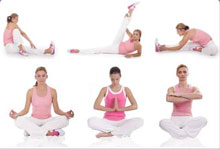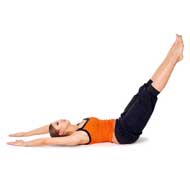- Raja yoga
- Yoga Stretches
- Jivamukti Yoga Poses
- Yoga Tree Pose
- Sun and Moon Yoga
- Wind Removing Pose
- Hare Pose
- Accomplished Pose
- Urdhva Mukha Pinch Mayurasana
- Revolved Abdomen Pose
- Raised Foot Pose
- Scorpion Pose
- Butterfly Pose
- Half Tortoise Pose
- Revolved Twist
- Balancing Stick Pose
- Cat Pose
- Supported Shoulderstand
- Crane Pose
- Handstand
- Happy Baby Pose
- Firefly Pose
- Scale Pose
- Side Plank Pose
- Upward Facing Two-Foot Staff Pose
- Reclining Big Toe Pose
- Stick Pose
- Revolved Head-to-Knee Pose
- Full Boat Pose
- Upward Extended Feet Pose
- Yoga arm balance poses
- Core Yoga
- Inversion Yoga Poses
- Seated And Twist Yoga
- Horse Pose
- Cobbler Pose
- Seated Wide Angle Pose
- The Compass Pose
- Half Crow Pose
- Lotus Pose
- Reverse Warrior Pose
- Fixed Firm Pose
- Back-bend Poses
- Forward bend Poses
- Sarvangasana
- Ashtanga Yoga Poses
- Warm up poses
- Seated Poses
- Seated Forward Bends
- Chair Poses
- Standing Poses
- Standing Balancing poses
- Yoga Asanas
- Hatha Yoga Asanas
- Yoga Postures Online
- Partner Yoga Poses
- Anusara Yoga Poses
- Advanced Yoga poses
- Restorative Yoga Poses
- Kids Yoga Poses
- Beginning Yoga Postures
Bound Half Moon Pose - Baddha Ardha Chandrasana
The bound half-moon pose (Baddhya Ardha Chandrasana) one of the many poses in yoga that makes you conscious to your surroundings and helps you learn the art of balance. This is an extension of the half moon pose (ardha chandrasana).
In this pose, the extended arms signify the brilliant rays emanating from the moon, while the torso extended in one direction along with the leg extended in the opposite direction represents the surface of the half moon.
It is known to ease problems pertaining to the lower back aches and sciatica. The moon represents the light of the Gods as well as their brilliance in Yogic mythology. Being an inversion pose, the bound half moon pose targets the buttocks, legs, and hips. This yogic pose imparts important health benefits to the body’s internal system and organs, especially the digestive system. The “bound half-moon pose” is a useful stress reliever. Consistent and proper practice of this pose reaps mental and emotional well-being.
Steps
The following step-by-step instructions will help you perform the “bound half-moon pose”.
- The first step requires you to come into the Triangle Pose (Trikonasana) to the right side. Rest your left hand on the left hip. Slide your left foot about a foot forward by bending your knee. Inhale while you do this. Along with this, you have to extend the right hand about 12 inches past the little toe of the right foot.
- While exhaling, press the right heel and the right hand on the floor firmly. Straighten the right leg and simultaneously, try to lift the left leg parallel to ground level. You have to extend the left heel constantly in order to maintain the level of the raised leg and keep it strong. Do not lock and hyperextend the right knee. Ensure this by keeping the kneecap aligned in the forward direction such that it does not go inwards.
- The next step involves rotation of the upper torso towards the left side. However, you have to maintain the movement of the left hip in the forward direction. Beginners have to keep their left hand on the left hip and maintain a neutral position for the head.
- Bear most of the weight of the body on the standing leg. The hand resting on the floor has only the purpose of helping with the balance of the body, so it should be placed lightly on the floor. Keep the inner ankle of the right foot upwards. This enables the flow of energy from the floor into the groin. Pressing the sacrum and the scapula against the back torso, increase the length of the coccyx towards the heel.
- This one is the hardest step of the pose. While maintaining the balance of the whole body on the standing leg, lift the hand from the ground. Now, bring the extended hand behind the torso and rest in on the left hip.
Now try to clasp both the hands together. All this while, the leg should be elevated and maintained in that position, parallel to the ground while the knee of the standing leg should not be locked. - Stay in the pose for 1 minute.
- Now break the contact of the hands and bring the raised leg to the ground level while exhaling. Come back to the triangle pose (Trikonasana). Now repeat the pose for the other side.
Precautions
There are not many precautions for the bound half moon pose; however, you must keep in mind the following points.
- People suffering from diarrhea should avoid this pose.
- If you have migraine problems, then this pose is not for you.
- Low blood pressure patients are also advised to refrain from performing this pose.
- Those who have neck problems should look straight and not up when doing the pose.
- Patients suffering from insomnia should not perform the pose as it keeps the mind alert and awake.
Beginner’s tip
If you have just started yoga, then you must be careful about performing this pose. Most beginners find it difficult initially to touch the hand to the floor. A useful beginner’s tip for this pose is to use a block to support the hand. This increases the reach of the hand, and you do not have to lower your body very much in order to touch the ground. You can start off with the tallest block and slowly keep on decreasing the height with time.
Benefit to a specific body part
Benefits to the body when practicing the “bound half moon pose” are as follows:
- It strengthens the thighs, buttocks, abdomen, ankles and spine. It also helps shape and tone the muscles of the lower body.
- It stimulates the organs of the digestive system, thus improving digestion, helping with gastrointestinal problems, and decreasing the chances of obesity. In addition, bowel movements are also improved.
- It helps in opening up and stretching the shoulder joints.
- It stretches the chest, calves, spine, hamstrings, and groin.
- It improves one’s sense of balance, and coordination of the different parts.
Therapeutic Applications
Therapeutic applications of the pose include helping in the management and control of the mentioned conditions and illnesses:
- Menstrual pain and regulation of cycle
- Constipation
- Fatigue
- Sciatica pain
- Indigestion
- Gastritis
- Anxiety
- Backaches
- Lumbar pains
- Osteoporosis
- Stress
Variations
Instead of clasping your hands together, you can grab hold of the raised leg with your free raised hand. This variation ups the difficulty level of this yogic pose and makes it a bit more challenging.
Warm up poses
- Bound Angle Pose (Baddha Konasana)
- Reclining Bound Angle Pose (Supta Baddha Konasana)
- Wide-Legged Forward Bend (Prasarita Padottanasana)
- Extended Triangle Pose (Utthita Trikonasana)
- Standing Forward Bend (Uttanasana)
- Tree Pose (Vrksasana)
- Hero Pose (Virasana)
Follow-up Poses
There are no fixed follow up poses; however, the poses mentioned below are widely practiced after the bound half moon pose.
- Wide-Legged Forward Bend (Prasarita Padottanasana)
- Revolved Triangle Pose (Parivrtta Trikonasana)
 Find Pose
Find Pose

